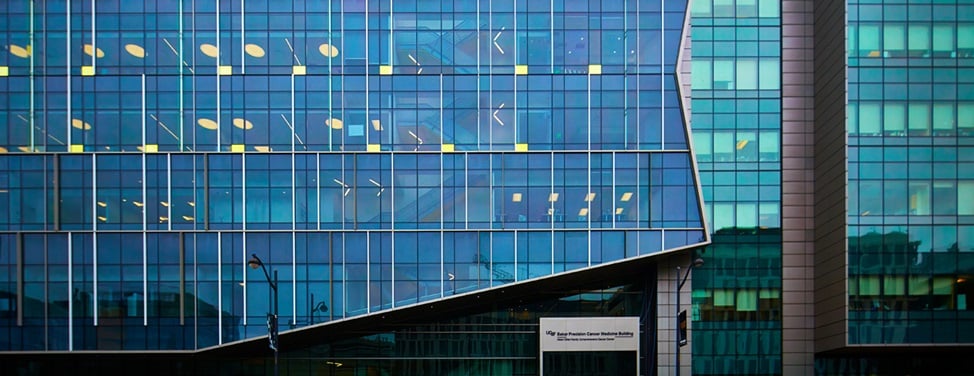- Free TRAM flap. The surgeon takes skin, fat, blood vessels and a small portion of muscle from the lower belly to reconstruct the breast. TRAM stands for transverse rectus abdominis myocutaneous.
Patients should know that there's another TRAM flap procedure, called a pedicle TRAM flap, and should understand the difference. In pedicle TRAM flap surgery, the surgeon keeps the abdominal tissue attached to its original blood supply and tunnels it under the skin and up to the breast area. Pedicle TRAM flaps can significantly decrease abdominal strength. We generally don't perform them at UCSF.
- DIEP flap. The surgeon takes skin, fat and blood vessels from the lower belly but leaves the underlying muscle intact. However, the surgeon does cut the muscle in order to collect the needed blood vessels. DIEP stands for deep inferior epigastric perforator, the type of blood vessel used in the procedure.
Because the muscle is left in place, the DIEP flap is considered an improvement over the TRAM flap.
- SIEA flap. The surgeon takes skin, fat and blood vessels from the lower belly without making an incision in the underlying muscle. SIEA stands for superficial inferior epigastric artery, a vessel running just under the skin of the lower abdomen. This technique is possible only for patients with a certain anatomy.
After a TRAM, DIEP or SIEA free flap procedure, your lower abdomen will be flatter. You'll likely have a scar from hip bone to hip bone and a scar around your belly button.
There is a small risk of abdominal bulge or hernia with these procedures.
You may not be able to have a free flap surgery using abdominal tissue if:
- You have abdominal scarring that may have damaged important blood vessels. (C-sections are OK.)
- You don't have enough donor tissue (the tissue you can pinch between your belly button and pubic bone).
- You already had an autologous reconstruction procedure using abdominal tissue and it wasn't successful.
Free flap reconstruction from the back
This technique is called a latissimus dorsi flap (for the back muscle that's used). The surgeon lifts this muscle and some skin from the patient's back and uses these tissues to support the breast skin and, in some cases, to help re-create part of the breast mound.
A latissimus dorsi flap may be combined with a breast implant to attain the preferred size. The implant is placed underneath the transferred tissue.
This procedure may be an option for women with small- to medium-sized breasts who:
- Had autologous reconstruction using tissue from another body area that failed
- Had complications from radiation therapy that affected the breast skin and don't have enough tissue for other types of flap surgery
Free flap reconstruction from the buttocks
- S-GAP flap. The surgeon uses skin and fat from the upper portion of a buttock to reconstruct the breast. S-GAP stands for superior gluteal artery perforator.
- I-GAP flap. The surgeon uses skin and fat from the lower portion of a buttock. I-GAP stands for inferior gluteal artery perforator.
Free flap reconstruction from the thighs
In thigh-based autologous reconstruction, the surgeon uses skin and fat – and in some cases, a muscle called the gracilis – from the upper thigh. To create a larger breast, the flap can be combined with an implant or (less commonly) another type of flap.
If you have small- to medium-sized breasts and using abdominal tissue isn't possible, a thigh-based flap may be a good option.
Disadvantages include:
- A higher risk of healing problems compared with free flaps taken from the lower belly.
- Potential leg swelling, although this usually goes away with time.
- If tissue from only one thigh is used, that thigh may look tighter and thinner than the other. Some women opt to have additional procedures to make their thighs more symmetrical.
Gracilis-based flaps
The gracilis, a muscle of the upper inner thigh, helps bring the leg toward the body. Its function will be lost after this type of surgery.
There are a few approaches to gracilis-based flaps, named for the orientation of the incision made on the thigh:
- TUG flap. Transverse upper gracilis flap
- VUG flap. Vertical upper gracilis flap
- DUG flap. Diagonal upper gracilis flap
The incision used depends on the patient's thigh shape and their surgeon.
While most surgeons try to conceal the scar in the crease at the top of the thigh, the incision is sometimes made a bit lower, leaving a scar that may be visible when you wear a bathing suit.
PAP flaps
In a PAP flap, the surgeon takes skin and fat – but no muscle – from the back of the upper thigh to reconstruct the breast. PAP stands for profunda artery perforator, a blood vessel in this area.
PAP flap scars are usually hidden in the crease between the lower buttock and upper thigh.








